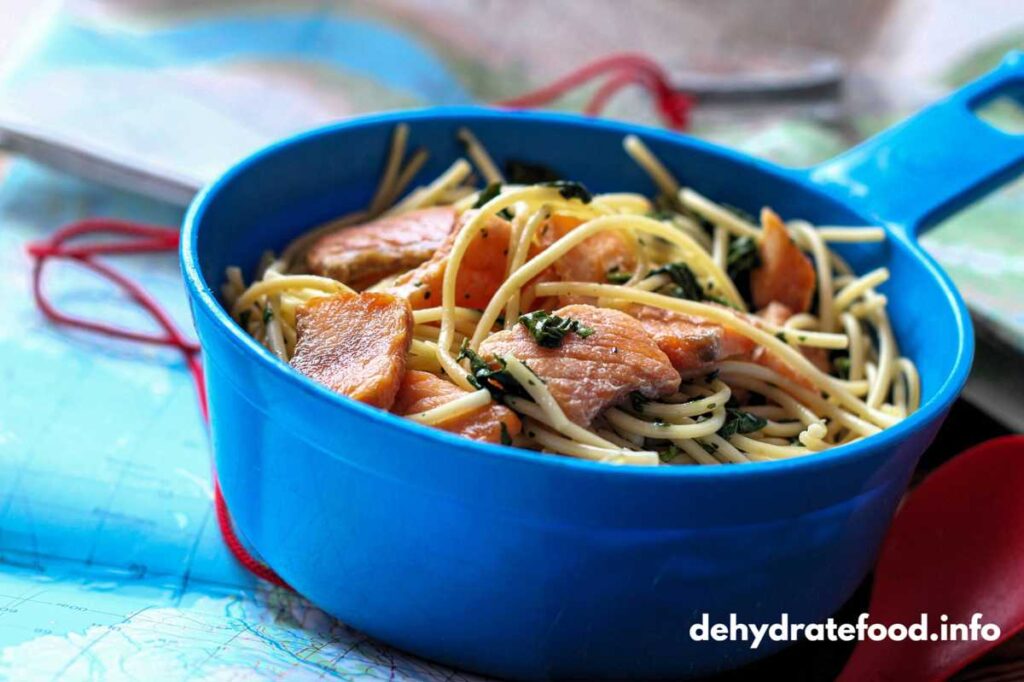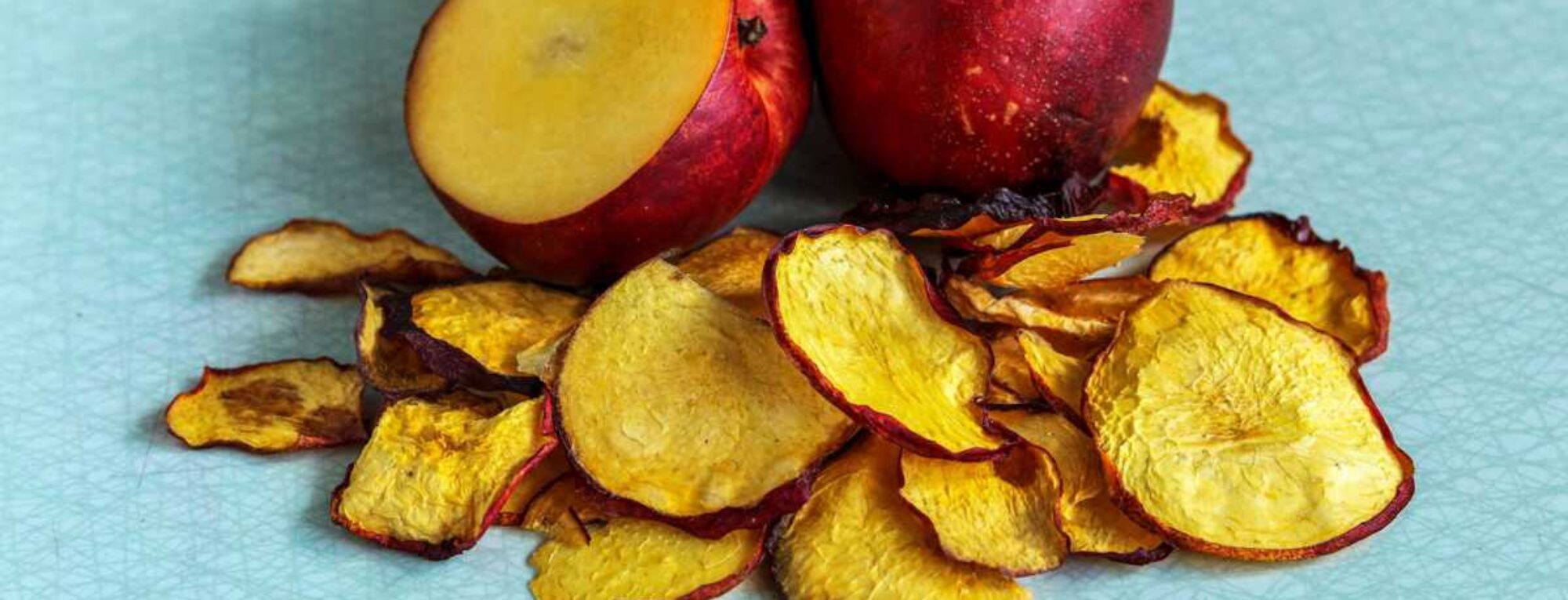HOW TO DEHYDRATE FISH
The full process in described in the Book
| Cut | Thin slices |
| Pre-treat with heat | Yes, bake in oven |
| Temperature | 68°C (155°F) |
| Time | Food dehydrator: 10 hours Convection oven: 14 hours |
DEHYDRATE FISH
Dehydrating fish is more straightforward than you think, and it turns out delicious! You can make stews, soups, and tasty pasta sauces with dried fish. Also, if you dry it thin, you get fish chips – they can be eaten dry as a snack or sprinkled directly on food as a condiment.
Fish, like meat, can be marinated before cooking and drying – for example, with garlic, salt, and black pepper. Another way to add flavour is to soak the fish in a marinade.




Choosing fish to dehydrate
- Haddock, pollock, cod, perch, pike, and other whitefish.
- Fresh or smoked salmon has a limited shelf-life as it is fatty.
- Tuna in water, mackerel in tomato sauce and other canned fish.


Dehydrated salmon crumbled and in pieces


Dehydrated canned tuna

DRIED SEAFOOD
Shrimp and crayfish may not be the first thing that comes to mind for dehydration. But all seafood can go in the dehydrator, preferably the ones you buy in brine. They become delicious and are suitable to be ground into a powder. Sprinkle over food for a taste explosion! Dried seafood is also perfect as a stock for stews and soups.
It is easy to dehydrate seafood, but be careful with hygiene. It should be daily fresh if you buy uncooked seafood; otherwise, choosing frozen or in brine is a better alternative. Also, as with all food, store the dried shellfish properly.
Shellfish to dehydrate
Prawns, crawfish, crayfish, lobster, clams and more.
HOW TO DEHYDRATE SEAFOOD
| Cut | Thin slices or whole |
| Pre-treat with heat | Yes, bake in oven |
| Temperature | 68°C (155°F) |
| Time | Food dehydrator: 5 hours Convection oven: 8 hours |




